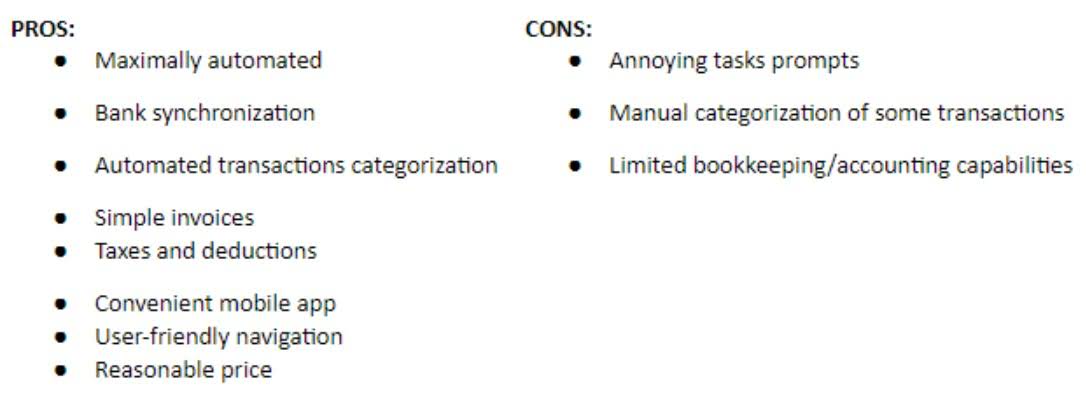
Without reversing entries, the accountant is highly likely to make a double posting for the same transaction. All expenses must include in the accounting period although they are not yet paid. For example, the accrued expense on payroll, construction contract, and other services. At the end of accounting period, accountants must accrue these transactions base on the occurance. Reversing entries in accounting provides numerous advantages that help businesses maintain accurate and efficient financial records. Companies can prevent errors, enhance transparency, and streamline their accounting practices by understanding what is needed to reverse the process.
- These are optional, but incredibly useful, journal entries made at the start of a new period to reverse certain adjustments from the prior one.
- They simplify processes, prevent errors, and ensure the accuracy of financial records, making them invaluable for efficient business operations.
- The reversing entry simplified the recording process by allowing the recording of the entire $12,000 salaries paid as expense when the actual payroll was made.
- Below are some best practices for implementing reversing journal entry effectively.
- If the accountant did not make a reversing entry at the beginning of the year, the accountant will have this entry upon collection of the income.
- The total payroll of $12,000 consists of $5,000 salaries expense recognized on December 31, 2022 and $7,000 on January 15, 2023.
- The process involves straightforward adjustments, such as changing a debit to a credit or vice versa, making it easy for accountants with varying levels of expertise.
Step 6: Preparing an Adjusted Trial Balance
Some reversing entries are created manually to reverse a transaction in the ledger. Reversing entries can be used when a ledger transaction posts incorrectly, or to adjust the balance of an HOA Accounting accrual or prepaid account. You can post a manual reversing entry at any time during the month as needed to balance the ledger.

Reversing Accrued Income
👉 For example, if an accrued expense was recorded at the end of December, a reversing entry on January 1st will cancel it out, ensuring the expense is only counted once when actually paid. For example, if the utilities for each month are paid at the beginning of the next month, you would have used the utilities as of December 31, but you won’t have to pay for them until the next year. The matching principle states that we should recognize the expenses when they are incurred and match them to the revenues they help generate. In this case, the utilities expense should be recorded in December even if it is not paid until January. This expense is accrued by debiting utilities expense and crediting the accrued utilities account.

Function of the Reversing Journal
- As these entries are no longer required to be recorded as the business’s assets or liabilities, they are reversed at the period’s start.
- Reversing entries are journal entries that are created to reverse adjusting entries at the start of the next accounting cycle.
- The adjusting entry reduces the unearned revenue liability by $3,600 resulting to a credit balance of $2,400.
- To illustrate accrued income and how to reverse it, let’s assume that you rent out apartment spaces for $1,000 per month.
- Reversing entries are made at the beginning of the new accounting period to enable a smoother accounting process.
These transactions aim to correct the income and expense amount that will be included in the Income statement. Once the invoice arrives, the company records the transaction accurately by debiting the expense account and crediting the accrued expense payable account. This ensures balances are correctly reset and financial records remain accurate. By reversing entries in these scenarios, businesses can maintain accurate and reliable financial records.
Reversing entries are a powerful tool in accrual-based accounting that help streamline the transition between periods, reduce errors, and simplify daily bookkeeping. While not all adjusting entries should be reversed, using them correctly can improve both efficiency and accuracy. Modern accounting software like Wafeq allows users to mark adjusting entries as reversible, and the system will automatically generate the reversing entry on the first day of the new period. Reversing entries are typically used for accrued expenses and accrued revenues.
The Accounting Cycle Steps: Mastering the Foundation of Financial Record-Keeping
👉 For instance, if an adjusting entry involved debiting salaries expense and crediting salaries payable, the reversing entry would credit those by the same amount. Identifying reversing entries involves recognizing entries made at the beginning of an accounting reversing entries are optional period to reverse or cancel out adjusting entries from the end of the previous period. Reversing entries are optional and are made at the beginning of the new accounting period. They simplify the recording of future transactions related to previous accruals and deferrals. After adjusting entries are made, an adjusted trial balance is prepared.
Learn More About Business Software
The accounting cycle is a series of steps that accountants follow to track and manage financial transactions over a specific accounting period. It begins with the identification and recording of transactions and ends with the preparation of financial statements and closing of accounts. The cycle is repeated each accounting period, ensuring that financial information is accurate, complete, and up-to-date. Reversing entry applies to accrued expenses or revenues, simplifying the process and reducing the risk of mistakes. Examples of automatic reversing journal entries often include accrued salaries or interest adjustments. Spendflo simplifies financial operations by giving finance and procurement teams full visibility into SaaS spend, contracts, and billing cycles – making it easier to align with your accounting processes.

I believe I would have gotten the question wrong anyway but the professor listed the correct answer as the worksheet, the post closing trial balance, the trial balance, and the adjusted trial balance. 👉 Let’s say, you ordered raw materials from a supplier to make some product that you want to sell. You receive the raw materials, but you still haven’t gotten the invoice by the end of an accounting retained earnings balance sheet period. On average, reversing entries occur on the first day of the new period, mirroring the original adjustments but with opposite values. The income statement will include expenses related to office supplies, impacting net income. The unadjusted trial balance will list accounts such as Office Supplies and Accounts Payable with their respective balances.
Create the Reversing Entries at the Beginning of the New Period
For the past 52 years, Harold Averkamp (CPA, MBA) has worked as an accounting supervisor, manager, consultant, university instructor, and innovator in teaching accounting online. Shaun Conrad is a Certified Public Accountant and CPA exam expert with a passion for teaching. After almost a decade of experience in public accounting, he created MyAccountingCourse.com to help people learn accounting & finance, pass the CPA exam, and start their career.
